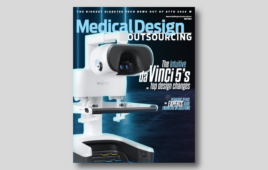
[Image from Zoll]
The highly sensitive wearable cardiac defibrillator (WCD) known as the Zoll LifeVest can deliver an electric shock when the heart beats out of rhythm. It was designed for around-the-clock wear to bridge the sensitive period before a pacemaker can be implanted.
Current medical guidelines recommend waiting at least 40 days after a heart attack before placing an implantable cardiac defibrillator (ICD), and 90 days if the patient has had a vascular stent implanted or has undergone bypass surgery. The international study led by researchers at the University of California San Francisco (UCSF) had aimed to determine whether the vests significantly reduce sudden cardiac death. It appears today in the New England Journal of Medicine.
Device participants were fitted, trained and instructed to wear it continuously except while bathing. The WCD group wore the device an average of 14.1 hours daily over the study period, starting at 18 hours and decreasing to 12 hours by day 90, at which point only half of the WCD patients still chose to wear the device.
The study found no statistical difference in sudden cardiac deaths or rehospitalization between the patients assigned to wear the vest and the control group, in part due to the lower-than-expected wear time, Olgin said. However, death rates dropped significantly during times the WCD was worn compared to times it was not. The study found a 35.5 percent lower risk of overall mortality in the WCD group, at 3.1 percent versus 4.9 percent in the control group.
“It remains unclear how to reduce the risk of arrhythmic death definitively, beyond what is possible with appropriate medical therapy, in the early period after heart attack before implantable cardioverter defibrillators are suggested,” said UCSF Health cardiologist Jeffrey Olgin, lead author of the paper and chief of cardiology at UCSF, in a prepared statement. “However, given the totality of the data, the WCD may be reasonable in high-risk patients who are likely to wear the WCD based on shared decision-making.”
The guidelines also recommend considering a wearable device for a wide range of patients at risk of sudden cardiac death, including those who have low ejection fraction — a measure of the heart’s pumping ability — following a heart attack.
“Previous research has shown the risk of mortality in low ejection-fraction patients is highest in the first 90 days after a cardiac event, such as a heart attack or a new diagnosis of heart failure,” said UCSF Health cardiologist Byron Lee, an arrhythmia researcher and study co-principal investigator.
In collaboration with the National Institutes of Health (NIH) and device manufacturer Zoll Medical Corp., the Vest prevention of Early Sudden death Trial (VEST) enrolled 2,302 patients in the United States and Europe from July 2008 to April 2017 who had low ejection fractions within seven days of their hospital discharge for heart attack. Patients were randomly assigned in a 2-to-1 ratio to the LifeVest WCD with guideline-directed therapy (1,524) or directed therapy only (778).
Twenty (1.3%) of the device participants experienced at least one appropriate shock during the study, while nine (0.6%) received an inappropriate shock. About 70% of participants who had an appropriate shock survived to 90 days. Of the 48 participants who died, only 12 were wearing the WCD at time of death.
“Although this study result is subject to confounding, it suggests a benefit to wearing the device and implies that low adherence to wearing it may be a limiting factor in the potential benefit of a wearable cardioverter-defibrillator,” said Mark J. Pletcher, MD, a UCSF professor of epidemiology and biostatistics who leads the VEST Data Coordinating Center. The researchers are exploring new analyses for estimating the true causal effect of wearing the WCD, Pletcher said.




![A photo of the Medtronic GI Genius ColonPro polyp detection system flagging a potential sign of colon cancer during a colonoscopy. [Photo courtesy of Medtronic]](https://www.medicaldesignandoutsourcing.com/wp-content/uploads/2024/04/Medtronic-GI-Genius-doctors-268x170.jpg)